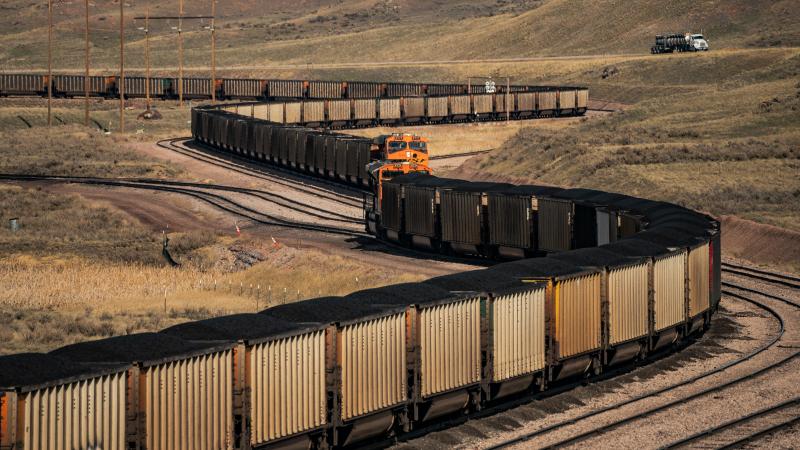Texas’ Permian Basin sees another billion-dollar oil and gas merger, signaling long future for oil
While influential organizations, such as the International Energy Agency, predict peak oil consumption will be seen within the next decade, the merger activity in America’s shale areas suggests that oil companies are betting on long-term demand.
Diamondback Energy is merging with Endeavor Energy Resources, a privately held company. The buyout is the latest in a frenzy of mergers that began in October, and analysts say it’s reflective of a matured shale industry and a long-term bet on oil and gas demand.
According to last week’s announcement, Diamondback, which is publicly traded, will pay $8 billion in cash and 117.3 million shares. Combined with Endeavor’s properties, according to calculations by S&P and Bloomberg, Diamondback will produce 801,000 barrels of oil and gas per day ("boepd"), which is 6% of the total U.S. production. This will put it in third place in the Permian behind Exxon-Pioneer, which produces 1.347 million boepd, and Occidental-Crownrock, which produces 910,000 boepd.
Shale growth
The merger with Endeavor “is a combination of two strong, established companies merging to create a ‘must own’ North American independent oil company,” Travis Stice, chairman and CEO of Diamondback, said in a statement.
Endeavor, The Wall Street Journal reports, started out from a single well that founder Autry Stephens drilled 45 years ago. Over the years, Stephens refused to sell Endeavor, even turning down offers from industry giants like Exxon. He preferred running a tightly knit operation with employees who spent their whole careers with the company. It was a cancer diagnosis, he told the Journal, that changed his mind. The deal will make Stephens one of the richest men in the world.
The Shale Revolution, as it’s often called, started to boom in 2009. At the time, the U.S. was producing around 5 million barrels of oil per day. By the spring of 2015, oil prices began to tumble and the industry entered a downturn. The industry turned back around in the summer of 2016, and by the time the pandemic hit, the U.S. was producing nearly 13 million barrels of oil per day.
Coming out of the pandemic, combined with the lessons learned from previous busts, the shale industry began to take a leaner, more measured approach to its business.
Companies want "in" on Permian Basin
Since October, several companies have sought to consolidate their Texas assets.
Writing in Forbes, David Blackmon, an energy analyst who publishes “Energy Absurdities” on Substack said the Diamondback-Endeavor deal will transform a big upstream company into one of the Permian Basin’s regional giants. The Permian Basin is a prolific shale area that spreads across West Texas and southeast New Mexico. Upstream companies deal with the exploration and initial production stage of the oil and gas industry.
In October, two of the Permian’s leading producers were subjects of mergers last year. Exxon acquired Pioneer Natural Resources for nearly $60 billion, and Chevron bought Hess for $53 billion. In a third major Permian-located acquisition, Occidental acquired Crownrock for $12 billion in December.
Andrew Dittmar, senior vice president at Enverus, an energy data and analysis company, told Blackmon that the Diamondback deal will come to less than $4 million per location for each of Endeavor’s approximate 3,300 locations. That comes to approximately $37,000 per net acre. This is lower, Dittmar said, than Exxon’s acquisition of Pioneer, and it’s also lower than Occidental paid for Crownrock’s locations.
Blackmon told Just The News that through these mergers, producers are looking for efficiencies and economies of scale, especially in the Permian Basin. “What the acquiring companies have been looking for is takeover targets whose assets are highly contiguous to their own assets, so that they can drill fewer wells but still access the same amount or even a larger amount of acreage by drilling across leased lines and combining it all,” Blackmon explained.
For example, Exxon and Pioneer’s acreages were very close together across the basin.
“Exxon and pioneer employees out there in the Midland-Odessa area had been stumbling all over each other for 15 years out there,” Blackmon said. He added that there’s a similar dynamic at play here between Diamondback and Endeavor. “Mewbourne now stands out as ripe for the picking, assuming its owners want to sell,” Blackmon wrote in his Substack.
Enverus' Dittmar said that, while mergers and acquisitions in 2024 won’t be as frenzied as last year, it’s still expected to be a busy one for America’s shale operations. Dittmar suggested the next big Permian buyout target will be Mewbourn Oil.
Coterra Energy is another big producer in the Permian, cranking out 270,000 barrels per day from the basin, according to Bloomberg. Blackmon wrote that Coterra’s holdings are spread out across the Permian, Marcellus Shale in Pennsylvania, and Oklahoma’s Anadarko Basin. For a larger company like Chevron or ConocoPhillips to buyout Coterra would require a more complex and gas-heavy deal, Blackmon wrote, and such a deal would likely result in divestment of non-core assets, if it happened. The same diversity of assets is true of Ovintiv and EOG.
Devon Energy, while having operations spread out in multiple shale plays, produces 478,000 boepd from the Permian, but there are rumors the company is in talks contemplating a merger with EnerPlus.
Blackmon said these other candidates, while not offering entirely contiguous assets, also don’t appear to be interested in buyouts.
No stranded assets
While the mergers are bringing efficiencies, they are also signaling an industry that is investing heavily in the long-term. This disputes speculations that the oil industry will soon sink under the weight of “stranded assets” as the world will supposedly transition away from fossil fuels. Stranded assets are often defined as infrastructure, property and investments where the value has fallen so steeply they must be written off.
“No one in the industry believes the stranded asset theory, and you see it today in OPEC’s demand forecast, and very strong demand for the foreseeable future, really, for decades to come,” Blackmon said in an interview.
Along with growth in bitcoin, electric vehicles, and data centers, the grid will need a lot of energy to meet demand. “You’re going to need more of everything, and that includes oil, gas and coal,” Blackmon said.
The Facts Inside Our Reporter's Notebook
Links
- Diamondback Energy
- Endeavor Energy Resources
- Diamondback is publicly traded
- said in a statement
- Wall Street Journal reports
- Shale Revolution
- producing at the time around 5 million barrels per day
- oil prices began to tumble
- measured approach to its business
- Writing in Forbes
- Energy Absurdities
- Permian Basin is a prolific shale play
- exploration and initial production stage
- according to Reuters
- Exxon acquired Pioneer Natural Resources
- Chevron bought Hess for $53 billion
- Occidental acquired Crownrock
- Enverus
- wrote in his Substack
- contemplating a merger with EnerPlus
- stranded assets
- OPEC’s demand forecast
















